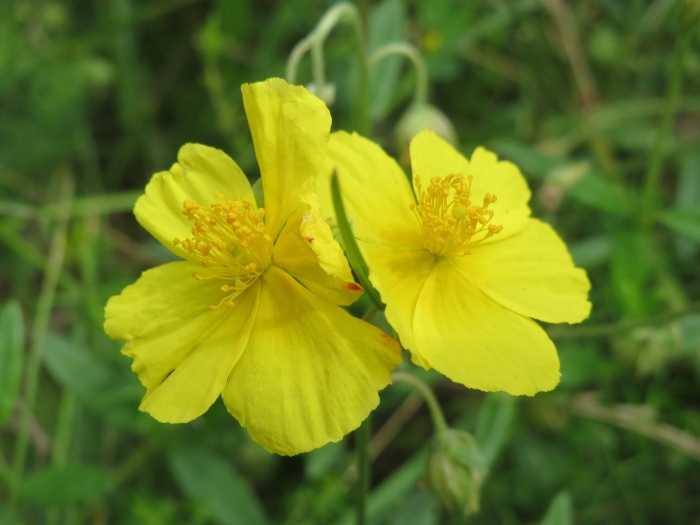Common Rock-Rose
(Helianthemum nummularium)
Common Rock-Rose (Helianthemum nummularium)
/
/

Andreas Rockstein
CC BY-SA 4.0
Image By:
Andreas Rockstein
Recorded By:
Copyright:
CC BY-SA 4.0
Copyright Notice:
Photo by: Andreas Rockstein | License Type: CC BY-SA 4.0 | License URL: http://creativecommons.org/licenses/by-sa/4.0/ | Rights Holder: Andreas Rockstein | Publisher: iNaturalist | Date Created: 2014-08-03T12:55:45-07:00 |


















Estimated Native Range
Summary
Helianthemum nummularium, commonly known as Common Rock-rose, is a low-growing, evergreen perennial herb native to a variety of habitats across most of Europe, including dry, base-rich soils of chalk downs, open woodlands, and Mediterranean scrublands. It typically forms a mat-like ground cover reaching 6-12 inches (15-30 cm) in height and spreading up to 20 inches (50 cm). The plant is characterized by its small, oval, green leaves and its profusion of bright yellow, saucer-shaped flowers that bloom from late spring to midsummer (May to July), which are particularly showy and attract pollinators.
Common Rock-rose is valued for its drought tolerance and its ability to thrive in poor, well-drained soils, making it an excellent choice for rock gardens, alpine gardens, and as ground cover in sunny, dry areas. It is also used to stabilize slopes and banks. The plant’s flowers provide a valuable source of pollen for bees and serve as a food plant for the larvae of certain moths and butterflies, including the silver-studded blue. Cultivation requires minimal maintenance, but it is important to avoid overwatering and to provide full sun exposure. While generally disease-free, it can suffer from root rot in poorly drained soils.CC BY-SA 4.0
Common Rock-rose is valued for its drought tolerance and its ability to thrive in poor, well-drained soils, making it an excellent choice for rock gardens, alpine gardens, and as ground cover in sunny, dry areas. It is also used to stabilize slopes and banks. The plant’s flowers provide a valuable source of pollen for bees and serve as a food plant for the larvae of certain moths and butterflies, including the silver-studded blue. Cultivation requires minimal maintenance, but it is important to avoid overwatering and to provide full sun exposure. While generally disease-free, it can suffer from root rot in poorly drained soils.CC BY-SA 4.0
Plant Description
- Plant Type: Shrubs
- Height: 0.5-0.7 feet
- Width: 2-3 feet
- Growth Rate: Moderate
- Flower Color: Yellow
- Flowering Season: Spring, Summer
- Leaf Retention: Evergreen
Growth Requirements
- Sun: Full Sun
- Water: Low
- Drainage: Fast
Common Uses
Deer Resistant, Drought Tolerant, Groundcover, Low Maintenance, Rabbit Resistant, Rock Garden, Showy Flowers, Street Planting
Natural Habitat
Native to a variety of habitats across most of Europe, including dry, base-rich soils of chalk downs, open woodlands, and Mediterranean scrublands
Other Names
Common Names: Rock Rose , Solncecvet Monetolictnyj , Sunrose , Yellow Rock Rose
Scientific Names: Helianthemum nummularium , Cistus grandiflorus , Cistus hirtus , Cistus vulgaris , Helianthemum chamaecistus , Helianthemum jacquini , Helianthemum mutabile , Helianthemum nummularium , Helianthemum nummularium f. ochroleucum , Helianthemum nummularium var. nummularium
GBIF Accepted Name: